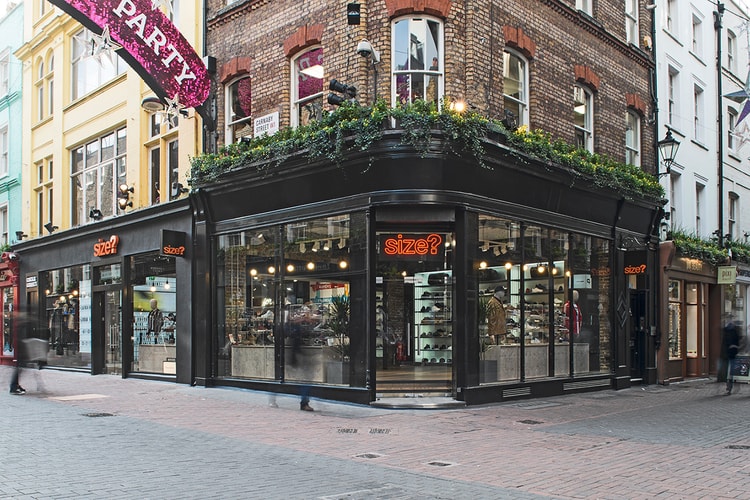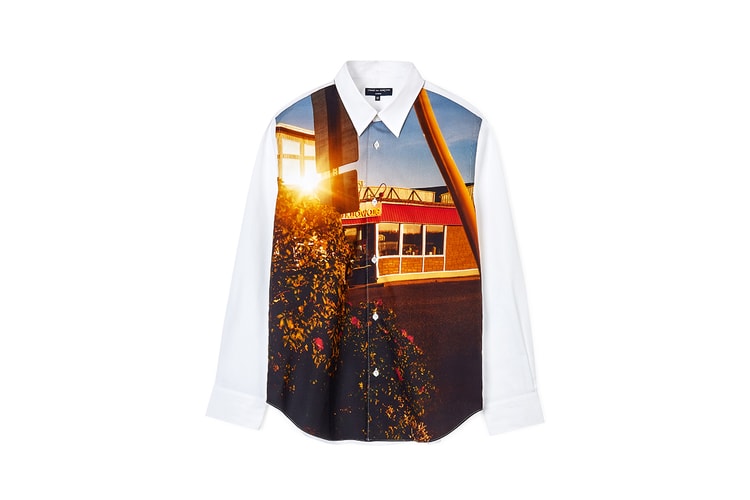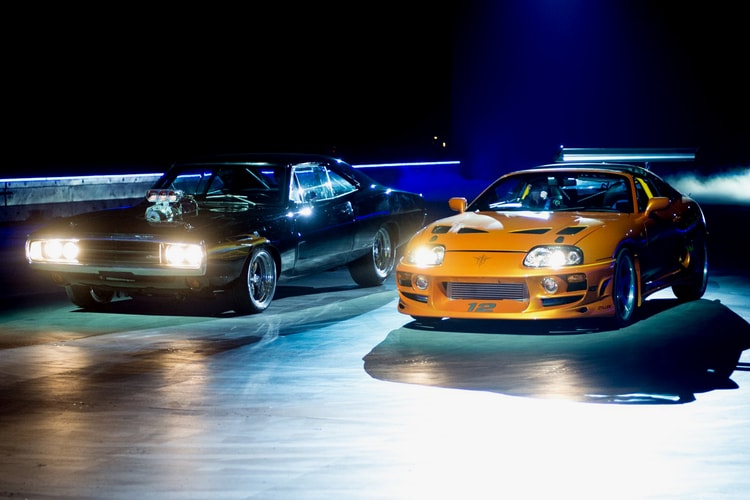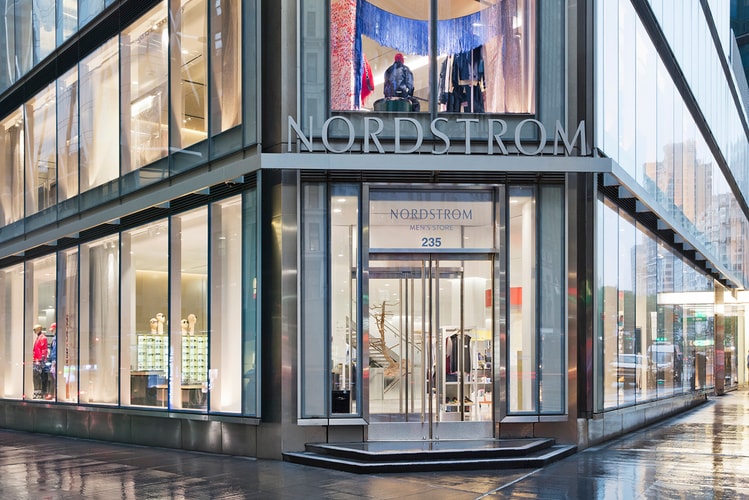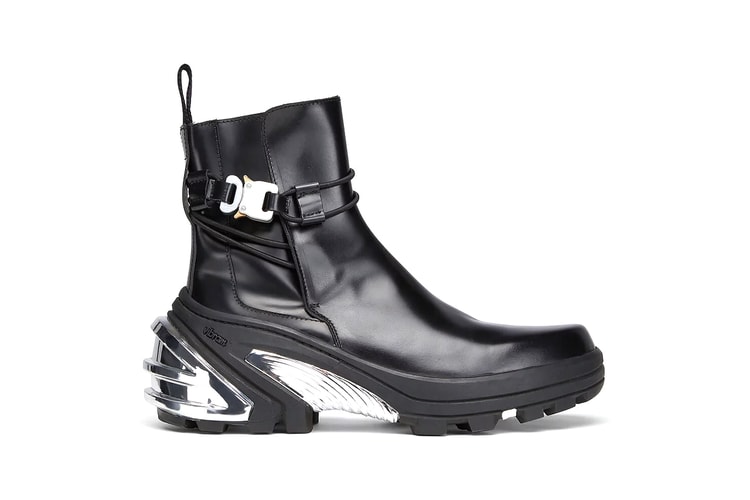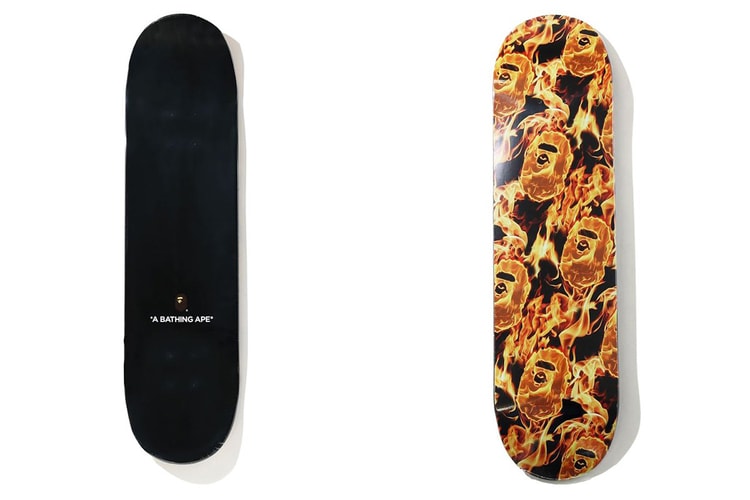This is How Experts Buy, Sell and Cherish Vintage Clothing
14 collectors, archivists and aficionados break down their love for the game.
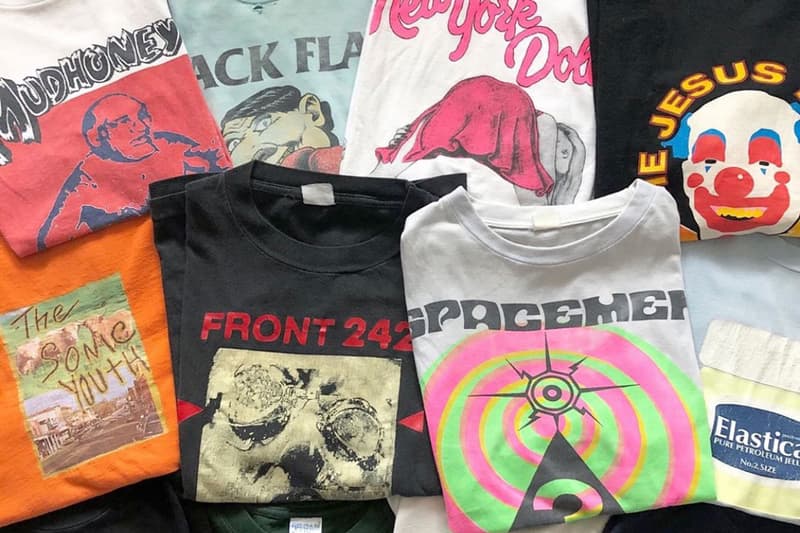

Vintage clothing truly is big business; secondhand shopping will reportedly eclipse fast fashion in coming years, with customers and brands alike earnestly considering the dire need for climate-conscious initiatives. These sustainability-minded consumers inspired the early-’00s rise of various resale and consignment stores, like StockX, Grailed, Vestiaire Collective and Rebag, to name a few.
As these secondhand retailers grew, a smaller sect of collectors, archivists and vintage experts began offering their personal stashes to the public as a curated counterpart to those larger marketplaces. In the past few years, this market has exploded with deep-pocketed celebrities making appointments with top dealers, coveted pieces garnering record prices and once-online-only outposts hitting the road for experiential pop-up events.
Today’s market is fascinatingly mercurial, shaped by ever-shifting user demands and the expanding consciousness of the taste-making curators at its core. Micro-trends flourish and vanish, occasionally gaining lasting relevance as memes in social media fashion groups. For instance, one of the first major trends — Issey Miyake Sport varsity-style jackets — gained enough notoriety to receive a Stüssy parody.
Naturally, that fluid market demands substantial know-how to navigate. To cut through all the noise and hype around secondhand clothing, we spoke with a variety of vintage stores and archivists on everything from where to source hidden gems to what crucial details to consider when shopping online.
Fernando Rangel, Silver League

Emma Wernsdorfer
What got you into vintage clothing and what keeps you interested?
From the onset it was about finding pieces that were unique, but affordable. It’s a great feeling when you stumble onto something you wouldn’t normally be able to find at a retail store. However, our continued interest now stems from digging into the history of these garments, the processes involved in their construction, the story behind them, and we like to share that knowledge via our platforms on Silver League and Unsound Rags.
Where do you look for new treasures?
We source everywhere we can. Whether that be through flea markets, online, or finding garments through other means. It’s important to keep fresh inventory and curate what’s unique and exciting to us. With vintage garments, that’s a lot easier; there are decades worth of items to choose from.
When or why does a vintage piece really speak to you?
There are certain characteristics like fades, wear and patina that we look for in vintage garments, although it varies depending on each style. For archive items we strive to find unique pieces that place an emphasis on construction, material, and design language specific to that designer.
How can people ascertain the quality of vintage goods when shopping online? Any ways to tell if something is overpriced?
People prescribe whatever monetary value they choose to clothes that interest them. It’s not our place to say what is and isn’t overpriced. Check the market.
Do you ever source things that are just too good to sell off?
There are times we do keep garments. That usually comes down to the wearability, although lately we have been collecting a lot more for the sake of collecting. The vast majority of the garments we curate are for sale, though.
Rui Shida, POST JUNK

Post Junk
What got you into vintage clothing and what keeps you interested?
The more [I liked] clothes, the closer [I got] to vintage. That was the natural scheme of things for me. I invest in unique and fashionable vintage [usually from the] U.S.A.
When or why does a vintage piece really speak to you?
When I [feel] the charm of vintage details, [whether they’re] cool or not in the present era. I think it’s important to be unique and fashionable, and those facets shine the brightest in older clothing.
How can people ascertain the quality of vintage goods when shopping online? Any ways to tell if something is overpriced?
I always try to provide more information than [you can] actually see. For example, true color corrections, textural descriptions and more photos. Plus, it’s important to identify high-quality details.
Do you ever source things that are just too good to sell off?
I had a lot of favorite things but [now] I only own some cheap Levi’s jeans and plain black T-shirts and sell everything else.
“People prescribe whatever monetary value they choose to clothes that interest them.”
Ian Campbell, Arbitrage NYC

Arbitrage Nyc
What got you into vintage clothing and what keeps you interested?
I got started around 2012, mostly looking for better clothing to wear but these days I’m much more interested in collecting clothing than wearing it. The hunt itself is very rewarding for me and probably why I’ve stayed connected to vintage for so long.
Where do you look for new treasures?
I would actually point to eBay. It’s an old standby, for sure, but I think it’s been a bit overlooked as of late with everyone defaulting to Grailed, Yahoo! Japan and The RealReal. The real answer though is probably “everywhere I can, whenever I can.”
When or why does a vintage piece really speak to you?
A couple years ago, it would have been something like “wearability” — [but old things] are just right for what people want to wear now. Right now though I’m interested in scarcity, which makes the hunt more thrilling. I’m currently focused on a collection of ‘90s Rick Owens, which has been quite a challenge, but I find that really engaging. I can go for months without seeing anything come to market but it just makes me appreciate the pieces I’m able to find even more.
How can people ascertain the quality of vintage goods when shopping online? Any ways to tell if something is overpriced?
The absolute best way to avoid overpaying is to be patient and avoid FOMO, especially when you’re new to a market. It’s really easy to overpay when you’re new and really excited about [something], but unfortunately that can kinda spoil it for someone as they get more comfortable and realize they went overboard. Sometimes it can feel like you’ll never see that piece for sale again but most of the time you will… mostly. I recommend taking your time and watching people buy and sell for a while before you pull the trigger for the first time.
Do you ever source things that are just too good to sell off?
There are definitely pieces that I don’t think I’d ever part with. I preserve them as best I can in storage for safe keeping. My ‘90s Rick Owens collection definitely falls into that category, along with the odd Helmut Lang or Dior Homme item. Eventually, I learned to separate the designers I deal in and the stuff I collect, otherwise I’d get too attached.
Avi Gold, Better™ Gift Shop

Avi Gold
What got you into vintage clothing and what keeps you interested?
What really got me into vintage clothing and clothing in general was a mix between old rap videos and magazines. I remember seeing an old issue of Mass Appeal magazine and there was an article on collecting Polo. [Also], through traveling to NYC and meeting all sorts of eccentric personalities I gained a lot of interest in vintage clothes. One of my mentors by the name of Post — basically a well educated street historian — put me onto a lot of game.
Where do you look for new treasures?
I frequent places like Value Village [and] I tend to visit a lot of shops too. [For example] when I’m in LA, I’ll stop by Varsity and in Toronto there’s a shop called In Vintage We Trust that has all sorts of gems.I recently went to the Rose Bowl but I found it kind of blown out and almost like “Instagram comes to life” (laughs).
When or why does a vintage piece really speak to you?
I look for nostalgia, meaningful, functioning and timeless pieces. It’s very hard now to find or acquire certain things because of inflation, but I love when a vintage piece has a story, like the Tommy Boy x Stüssy x Carhartt promotional jacket. Seeing the photo of Prince Paul or an original Stüssy tribe member wearing that just validates the piece that much more. One item that really spoke to was the Phillies Blunt Not From Concentrate cycling jersey which I acquired from Claudia; knowing the licensing story behind that and seeing all the other items Stash, Futura & Gerb created really speaks to me, since that is the blueprint of everything happening right now.
How can people ascertain the quality of vintage goods when shopping online? Any ways to tell if something is overpriced?
It’s really trial and error, coming across honest people in today’s day and age is really not common, unfortunately. I hate to say it but most things “vintage” now are extremely overpriced (laughs). Thanks to social media, things get hyped, they skyrocket and the price stays that way for a while. Sort of like how Patagonia rhythm hoodies are trending and the price is super high — it’s unfortunately just the way it is.
Do you ever source things that are just too good to sell off?
I source things all the time that are too good to sell [and] I’ve sold a lot of things on Better™️Gift Shop that I regret getting rid of. You just have to know that some things are replaceable but some things aren’t (laughs). I got a crewneck from Props Store and was about to put it on the Gift Shop [when] I got seller’s remorse and removed it. A lot of items I just want to have for archival purposes.
Casey Kohn, Coup De Grace

Dusty Kessler For Coup De Grace
What got you into vintage clothing and what keeps you interested?
Music is definitely what got me into clothing. The bands I listened to played a huge part in how I wanted to present myself; if they sang how I felt then they must look how I feel too.
When or why does a vintage piece really speak to you?
An item speaks to me when it can convey a mood. Before you are heard your clothing is seen, and I want my clothing to be a preview of how I feel.
How can people ascertain the quality of vintage goods when shopping online? Any ways to tell if something is overpriced?
The best way to ascertain quality is research. Study the market: has a similar item been sold before? There’s so much data from every marketplace and before you buy anything you should check similar items elsewhere to ensure you’re not over-paying.
Do you ever source things that are just too good to sell off?
All the time. In fact, I have an entire collection of not-for-sale items that I use solely for commercial pulls and rentals.
Sam Barback, Groupie NYC

Groupie Nyc
What got you into vintage clothing and what keeps you interested?
I got into selling archive clothing about five years ago. The beauty of these clothes is that there are so many designers that have such deep catalogues that I’m able to find and learn about new pieces and collections constantly. As new designers and new collections come about, the influence of these older collections becomes more and more apparent, making their stories even more interesting than before. I’ve recently gotten more into collecting general vintage clothing (like old band tees) and plan on launching a new online shop for them soon.
Where do you look for new treasures?
I buy a lot of clothes internationally, primarily online. I also have been lucky enough to meet some highly knowledgeable collectors over the years and am often able to trade and buy coveted and rare pieces from them.
When or why does a vintage piece really speak to you?
It’s different for every piece of clothing. Generally, I just like to trust my gut. I’ve had my hands on enough stuff at this point that I usually know if something is going to fit in with my collection. I’ve been very fortunate in that my personal taste has consistently resonated with my customers. I don’t sell sh*t I don’t like.
How can people ascertain the quality of vintage goods when shopping online? Any ways to tell if something is overpriced?
If you’re not already familiar with the market, your best bet is to shop with trusted sellers. A lot of these guys have spent years researching and studying clothing, so they’ve done all the hard work for you. Most of them also want to share their knowledge, so you shouldn’t hesitate to ask them questions.
Do you ever source things that are just too good to sell off?
Definitely. I have a healthy collection of clothes that I won’t sell, for now, but it’s always nice to know that these kinds of pieces will hold their value. That way, if I become bored of them or decide to change my style, it won’t be hard to find a new home for them and replace them with something that fits me better.
“The point is to build a community, not price-gouging.”
Dirk Jongenm, Nigel Ramnath, Concrete

Concrete
What got you into vintage clothing and what keeps you interested?
Our love for our basements. The smell is wonderfully musty and we think that the archive clothing fits nicely down there.
Where do you look for new treasures?
We visit other basements, such as the Pelgrimshoeve in the Netherlands and Ciney Expo in Belgium. The selection is incredibly large and nobody knows it, until now!
When or why does a vintage piece really speak to you?
The items must have a musty smell but be in good condition, only then do we think it fits in our basement. We also invest in items that are not yet vintage.
How can people ascertain the quality of vintage goods when shopping online? Any ways to tell if something is overpriced?
The trade is overpriced anyway, since it’s fishy to start with. We think it is important that the items get a second life, like compost.
Do you ever source things that are just too good to sell online? If so, do you keep ‘em, give to friends, archive ‘em — what do you do?
We prefer to put the items in our basement to allow them to mature for a third or fourth life. We’d rather burn the items than give them away or sell at a discount. Every single item in our shops was hand-picked by the owner. His vision has stood the test of time, therefore these pieces don’t deserve to end up in a sale.
Cole McBride, Jacob Keller, Hellmart

Hellmart
What got you into vintage clothing and what keeps you interested?
Hellmart didn’t formally start as a shop ‘til the beginning of 2019, but before that both Jacob and I had been collecting vintage clothing for a while and not selling it. That’s why we started Hellmart with so much product. We thought it would be a fun way to get people involved [with vintage] and use our following to show the items we like to collect.
Where do you look for new treasures?
Fortunately for Hellmart, we live in an amazing city with really passionate people who have been in this vintage world for decades now. There are a lot of really well curated shops and amazing pickers throughout Portland. For anyone wanting to get started: do it. Go around your town, get online, start making connections and digging up [whatever] you can find.
When or why does a vintage piece really speak to you?
It really depends on what you’re searching for. There are so many avenues when it comes to finding vintage clothing or antiques. For Hellmart, specifically, we have a wide range of tastes but when we go thrifting we definitely look for specific items, mainly from the ‘50s to the ‘90s, [including] denim, leather, U.S. military items, specific band tees, athletic hoodies, outdoor brands and more.
How can people ascertain the quality of vintage goods when shopping online? Any ways to tell if something is overpriced?
Given that Hellmart does operate entirely online — when we aren’t doing a flea market — we try to price fairly and give a lot of detail about the items we sell. The consumer knows that these items are one of a kind and they might have tears or stains. It’s a good idea to research what you have and set your items at a fair price. The point is to build a community, not price-gouging.
Do you ever source things that are just too good to sell off?
There is a lot of nostalgia involved in thrifting and when you find an item that triggers that nostalgia, it’s too hard to let it go. We do end up keeping a good amount of what we find, we work them into our daily wardrobes or keep them as collectibles.
Kyle Muhlfriedel, Middleman Co-Founder

Middleman
Where do you look for new treasures?
There’s nowhere better than photo archives of runway shows. Before I can even think of acquiring pieces for the store, I need to know with a high degree of specificity what to look for. This means not only which designers, but what seasons, materials, and types of tailoring properly represent their work. Vogue provides a solid archive of runway shows from major designers, but discovering and enriching your knowledge of little known labels can require digging through magazines, scans, and paid-subscription sites.
When or why does a vintage piece really speak to you?
I’m drawn to work that signifies a larger cultural movement. Fashion does not exist in a vacuum. Like cinema or music, it is a reactive art dependent on the world which it originated. [For example,] you cannot look at a Gianni Versace or Claude Montana runway show from the ‘80s without seeing it as symbolic of yuppies, new money, and the booming economy of the Reagan years.
How can people ascertain the quality of vintage goods when shopping online? Any ways to tell if something is overpriced?
Beyond raw material and artistic merit, an item’s value is usually tied to the provenance behind it. A Spring/Summer 2003 Raf Simons piece demands a heavy premium not just because of what it is, but because it is… representative of Simons’ finest work. Prices are not conceived in a vacuum, they’re calibrated to a market for both the specific label and the general fashion-sphere. If there is no such information available, it suggests the price was decided arbitrarily, and is probably overpriced.
Do you ever source things that are just too good to sell off?
Frankly, if an archivist believes something is too good to sell online, that says more about their store than it does about the piece. We’re always out to find and share the most beautiful and important pieces we can acquire. My single rule of thumb — even to this there are exceptions — I don’t keep clothes I don’t wear. As lovely as any given coat may be on a hanger, it is made to worn. To leave it in a dust-bag is a waste.
Clif Shayne, Middleman Co-Founder

Middleman
What got you into vintage clothing and what keeps you interested?
I found out about Supreme when I was in fifth grade, and got my first tee off the web store in 2013, two years later. Around the time I started getting into music, I first got obsessed with Raf Simons, Jun Takahashi and Hedi Slimane. You can’t be too prideful about how much you know; there’s a lot to gain from just shooting someone a DM to learn more. I’d say the continuing appeal these days comes from piecing together the puzzle of fashion from this era. Honestly, it feels like today’s stores and archivists document these designers’ history more effectively than the designers themselves do.
Where do you look for new treasures?
Like I mentioned earlier, my most important discoveries came from friends of mine
putting me onto the right stuff. I really can’t stress enough how important it is to talk to other people to learn more. Otherwise, you can get caught in a loop of looking at the same brands and pieces over and over again.
When or why does a vintage piece really speak to you?
If a piece ties into the greater design philosophy of the respective designer, I’m by default interested. Being able to share pieces like an Issey Miyake Olympics parka or a Stephen Sprouse “Hardcore” jacket is really a privilege. On the other hand though, I’m a sucker for pieces with a sense of humor to them. Things like my leopard print Yohji [Yamamoto] boxers (that are designed to be worn over pants), a COMME des GARÇONS T-shirt reconstructed out of a Diamond Supply Co. tee, an Undercover jacket made out of a vintage Patagonia jacket — these are always a lot of fun for me and keep me going.
How can people ascertain the quality of vintage goods when shopping online? Any ways to tell if something is overpriced?
Sellers are so unpredictable with how genuine and transparent they are, so there’s really no concrete guide I could lay out. You get the gist of everything through a lot of trial and error. Everyone f*cks up and gets burned at some point; it puts hair on your chest. I’ve gotten hit with my fair share of fakes. The best sellers are the ones who know what they’re talking about and have some sort of background with what they’re selling.
Do you ever source things that are just too good to sell off?
I’ve had a lot of pieces over the years that I think about how much I’m gonna regret selling them, but that’s the way it goes. I personally can’t fit most of the stuff I source, so the option of keeping them to wear is almost always out the window, but I still keep a couple gems in the collection.
Milo Harley and Ned Membery, Duke’s Cupboard

Duke’s Cupboard
What got you into vintage clothing and what keeps you interested?
We both grew up in London and have always been into hip-hop, graffiti, drum & bass and all the different styles within, and this was probably the main influence into our passion with vintage clothing.
Where do you look for new treasures?
We handpick everything and travel all over the world and try and put a lot of thought into each piece we have in the shop.
When or why does a vintage piece really speak to you?
We look for unique, culturally relevant pieces from the past (mainly ‘80s and ‘90s) that you probably won’t find in any other shops in London.
How can people ascertain the quality of vintage goods when shopping online? Any ways to tell if something is overpriced?
It’s always better to buy vintage in person rather than online because the nature of old clothes can be unpredictable — that’s why we find it important to have a physical shop. It’s also nice in this day and age to meet people and talk in person about the vintage we sell.
Do you ever source things that are just too good to sell off?
We have been doing this for a while and have found some really special pieces over the years that can be hard to let go of. Some of them we use for certain creative jobs, some for reference pieces, some just because we might never find them again.
“It feels like today’s stores and archivists document these designers’ history more effectively than the designers themselves do.”
Matt Sloane, Teejerker

Teejerker
What got you into vintage clothing and what keeps you interested?
I’ve always liked finding unusual old clothes; I used to go to local car boots as a kid with my parents and buy weird stuff all the time. This moved into hitting the local charity shops regularly when I was growing up and also realizing there was a bit of cash to be made on the side. The fact that you can find an item of clothing which you would never be able to replace is awesome. I guess the uniqueness of each item, combined with my place in the industry, keeps me invested.
Where do you look for new treasures?
So stuff comes from all over the world, I’m lucky enough to have a fairly decent following now and periodically someone will want to sell their whole collection which is great for us to acquire a lot of relevant stuff at once. I go to the U.S. pretty frequently and especially LA — the Rose Bowl has a huge flea market on the second Sunday of each month with quality vintage. I heard it used to be well cheap, but I think I was later to the game as it’s rare to find real bargains now.
When or why does a vintage piece really speak to you?
I think this is one of the reasons I like vintage most; the reason a piece can speak to you can vary a lot. So, for example, from the band tee side, I might love an album and never come across the accompanying promotional shirt [until now]. In this case, just the fact that it exists — and I’ve been looking for three years — is good enough. A big part of vintage is also the wear on each piece; it’s almost impossible to imitate the natural wear and fading of a regularly-worn 20-year-old T-shirt (despite the high street trying to), so for me, incredible wear is a big pull too. Finally how design ages through time is also important to me. A T-shirt from the ‘80s may have been super tacky at the time, whereas now the design looks charming and almost on trend without that ever having been the intention.
How can people ascertain the quality of vintage goods when shopping online? Any ways to tell if something is overpriced?
Working out pricing is just about putting the time in to research across platforms and not rush into anything. Some of the prices that personal sellers put items at on eBay, for example, is so stupid: three times the market value [or more] and just no context to it. The best way to ensure you’re getting what you want is to buy from a respected platform or seller who can be certain that their products are not fake [or marked up too high].
Do you ever source things that are just too good to sell off?
I have a decent archive of stuff that isn’t necessarily the most expensive or rare but more so stuff I really like or connect with in some way. I might have a friend really keen on something I’m holding, so after I’ve had it a while I’ll let it go. I would say that this is an ongoing process; sometimes I really regret letting something go that I didn’t want that much [at the time]. Likewise, stuff I thought I’d want forever will feel right to let go.
Yoshiyuki Maeda, Laboratory/Berberjin

Laboratory/Berberjin
What got you into vintage clothing and what keeps you interested?
I was [always] interested in used clothes as well as street and [contemporary] fashion, and started shopping at used clothes shops. I think I came to like it especially because of the [rich history behind] old clothes. Even now it continues to inspire me.
Where do you look for new treasures?
I usually go to American raghouses and thrift stores because vintage dealers only have limited items.
How can people ascertain the quality of vintage goods when shopping online? Any ways to tell if something is overpriced?
I think they need a minimum of used clothing knowledge and the experience of failure.
Do you ever source things that are just too good to sell off?
I have no habit of collecting, so I sell everything to customers. My pleasure ends when the goods I find reach the customer.
Eddie, Hafeez and Richard, Huiben Shop

Huiben Shop
What got you into vintage clothing and what keeps you interested?
We started Huiben when our interest in clothing was young and growing. Beyond being familiar with contemporary fashion, we wanted to broaden our knowledge and contextualize what was going on by trying to understand what came before. Over the years, Huiben has sort of become a window into all the things we find that are exciting; that includes archival clothing, of course, but also work from emerging designers and rare vintage non-designer garments. The vastness of clothing history and culture means we probably won’t get bored anytime soon.
Where do you look for new treasures?
We don’t look for new discoveries as much as we look for new frameworks. If we see a tired design in a novel execution that tweaks our perspective, it becomes a new discovery for us.
When or why does a vintage piece really speak to you?
We love vintage pieces where we can see their influence on contemporary garments that we [ourselves like]. We’ve encountered many garments where there’s a lineage tracing back to utilitarian or military origin; that history really piques our interest. If we look at something and imagine all the stories we can tell with it, we know it’s a must-have.
How can people ascertain the quality of vintage goods when shopping online? Any ways to tell if something is overpriced?
Quality and prices can be really subjective especially with secondhand goods. Pragmatically speaking, we try to remember how often something comes up, how much it’s sold for recently, and if it’s currently available elsewhere.
Do you ever source things that are just too good to sell off?
We think if something is truly special and none of us are using it, it should go to someone who will. Recently, we sourced the period-correct hardware used for the runway-only FW03 Helmut Lang harnesses (the buckles were too difficult to obtain for production even for the label itself) and recreated them. Originally this was just a personal project, but we decided to offer them for sale. Of course, there are things that we keep for ourselves as part of our personal wardrobes and collections but even then we’ll make the effort to document the pieces with photos and thoughts that we publish online. There are many instances where we’ve sold pieces just to end up buying them back in the future.
“My pleasure ends when the goods I find reach the customer.”
Kelly Saborouh, Horrorvacuo

Horrorvacuo
What got you into vintage clothing and what keeps you interested?
I delved into vintage designer — trendily known as “archive” — [clothing] about six years ago because of monetary opportunities, initially. Passion for the garments and designers came strongly afterwards and keeps me invested in it, especially in regards to how the vintage market affects the public’s style and fashion narrative.
Where do you look for new treasures?
Most of our products come from people reaching out to us and the community that surrounds vintage designers. Occasionally we go out to people’s homes around the globe who’ve been harboring treasures that have accumulated dust in their closet(s) for years. Other times we go to other vintage shops in other countries and we also deal online through other Instagram accounts of private collectors.
When or why does a vintage piece really speak to you?
I specifically look for pieces that have (subjective) historical and aesthetic value. I rarely go looking for something specific; for good finds I usually come across something by chance that I’ve studied previously from long-gone runway images. Sometimes things catch me by surprise and I find treasured garments I haven’t seen before at all. There’s a means to an end to finally be able to capture, surface and sell a particular piece of clothing only seen in obscure, low-resolution Pinterest pictures or expensive books. Despite Raf Simons’s popularity, for example, runway images of certain seasons are completely missing or found only in VHS tapes, expensive books or academic archives.
How can people getting into vintage ascertain the quality when shopping online?
Traditional vintage has perplexing unpredictable factors that contribute to the value of the item. That’s not to say that the prices some vintage band tees are marked at are unwarranted or unmerited, it’s just that with the uncertainties and variations of vintage there’s little concrete reference to determine if you’re getting a good deal.
I [often] see novice buyers doing casual value assessments by culling an item’s value from retail, sale, and outlet prices. Original retail price points have little, if any, contingency to a vintage item’s value. In fact, there are many demonstrable examples of designers that failed to sell on the floor resulting in most of their collection going straight to clearance, but were praised critically, [mostly] forgotten, and resurfaced as genius decades later.
Better constituents to determine casual appraisals include sold listings, demand for similar styles, items that resemble current day designs, elements and embellishments that possibly influenced current day catwalk designs, distinguishability, and finally, styles that embody the designer’s signature motifs.
Any ways to tell if something is overpriced?
There are rarely dead giveaways, but I’d say stick to mainlines as they usually hold the most value. Oh, and past-season items that recently fell off outlets (three years or less), don’t hold the scarcity and demand just yet to grant any liberties for sellers to mark up. I’d say stay away from “hype” honeypots that comply with the trendy criteria of the day. I think people who shop and style themselves with their eyes and hearts are better rewarded, in terms of closet value, than those who buy what others buy. Things that have a unique, distinguished aesthetic or thematic narrative that connects to you are usually the pieces you reach deeply for.
Do you ever source things that are just too good to sell off?
I frequently source things that have little profit or sometimes none at all for our social media, usually to surface or document something that I personally find significance in or genuinely appreciate. I find it an end in itself. I don’t really own many clothes. I own a few pairs of shoes, socks and underwear. I hardly hang on to anything. I wear whatever I have in store. It challenges me to explore different style compositions and outfits I usually wouldn’t see myself in.




